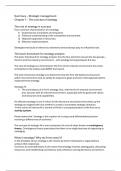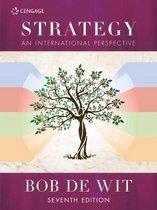Samenvatting
Complete summary for Strategic Marketing B&M
All chapters required for the course Strategic Marketing B&M (EBB649C05). Summary of the book: Strategy; Process, Content, Context. An international Perspective, 7th edition, Wit, B. de (2020). Chapters 1-5 and 7-13.
[Meer zien]





